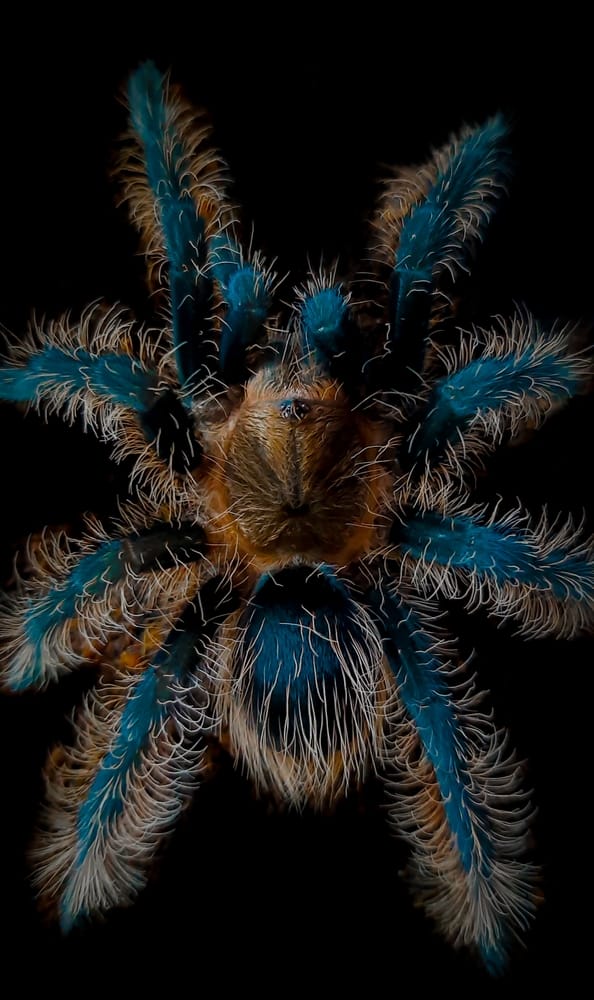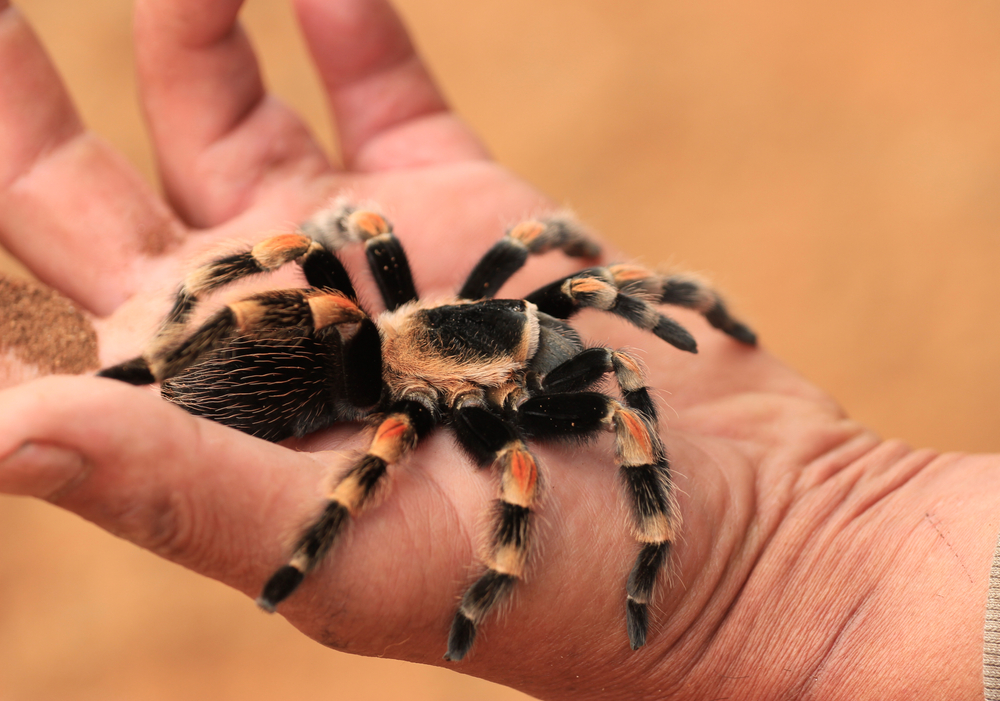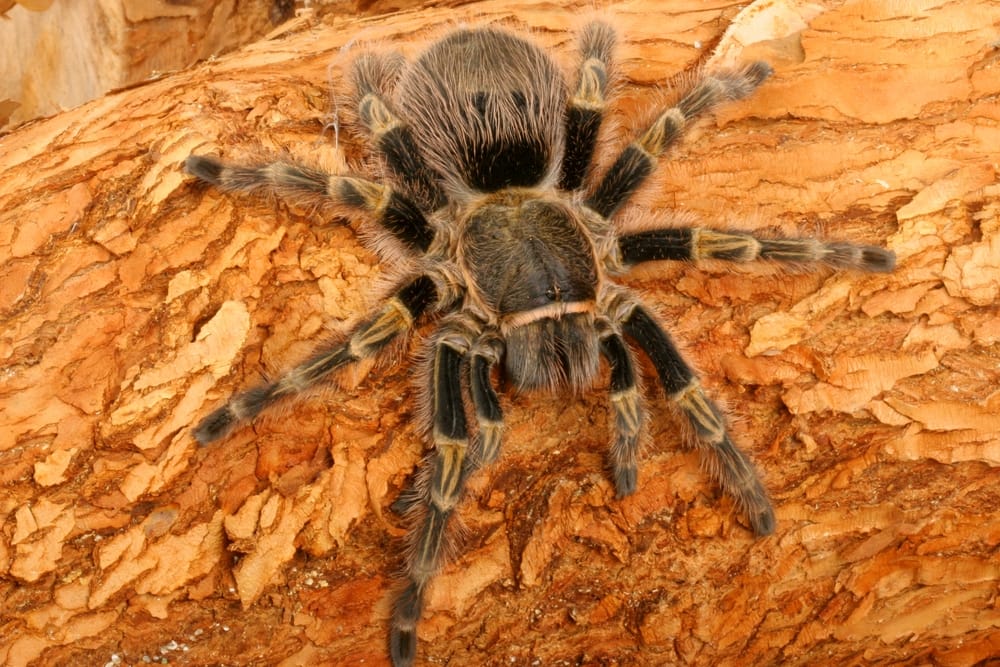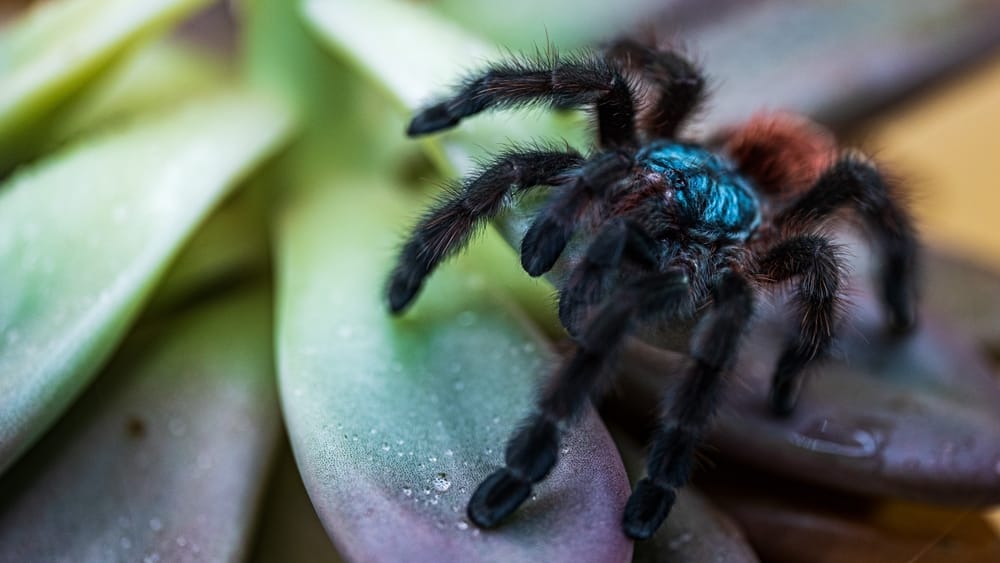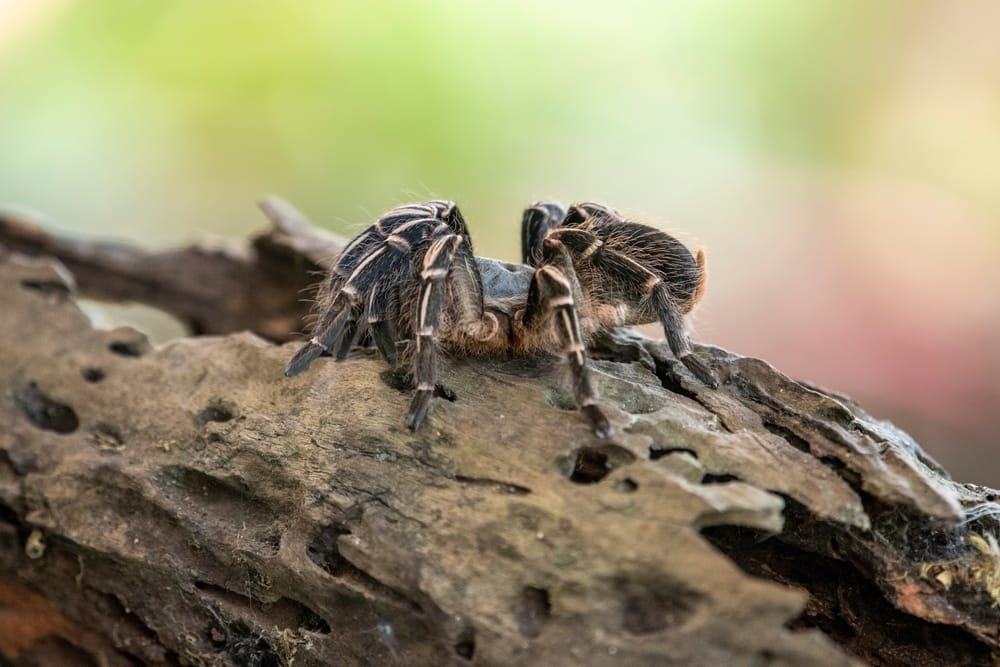Tarantulas provide an intriguing variety of exotic pets for individuals looking for something unique. These interesting creatures come in a wide range of colors, sizes, and personalities, making them surprisingly appropriate for responsible hobbyists. If you’re thinking about bringing a tarantula into your home, here are 10 of the most popular species for pet owners, as well as some important care tips.
1. Chilean Rose Tarantula (Grammostola rosea)
The Chilean Rose Tarantula, often known as the Chilean Fire Tarantula, is the ideal novice tarantula. This calm and long-lived species (females can live up to 20 years!) is distinguished by its stunning appearance, which includes a rich, reddish-brown body and copper-colored hairs. They are terrestrial tarantulas, which means they favor ground-based habitats and demand a warm, slightly damp atmosphere. Chilean Rose Tarantulas are recognized for their peaceful disposition and are unlikely to exhibit aggressive behavior. They require little maintenance.
2. Honduran Curly Hair Tarantula (Brachypelma albopilosum)
The Honduran Curly Hair Tarantula is another good choice for novices, with a stunning and distinct appearance. Their bodies are a deep brown color, with long, curly hair ranging from golden brown to black. These friendly tarantulas are terrestrial burrowers who like a warm, dry environment. Honduran Curly Hair Tarantulas are recognized for their calm disposition and leisurely movement, which makes them ideal for observation.
3. Greenbottle Blue Tarantula (Chromatopelma cyaneopubescens)
The Greenbottle Blue Tarantula is a stunning choice for those who are captivated by vibrant colors. This species lives up to its name – its carapace (upper body shell) shimmers with an iridescent blue sheen, while its legs boast a striking green color. These terrestrial tarantulas are known for their gentle nature and are relatively undemanding in terms of care. They prefer a dry environment with moderate temperatures.
4. Mexican Red Knee Tarantula (Brachypelma smithi)
The Mexican Red Knee Tarantula is a favorite among tarantula fans. This popular species is distinguished by its strong physique, attractive coloration (a reddish-brown body with unique red “knee” markings on its legs), and generally calm demeanor. Mexican Red Knee Tarantulas are terrestrial burrowers that prefer warm, dry conditions. While these tarantulas are usually quiet, when disturbed, they will kick and release barbed hairs that can irritate.
5. Pink Toe Tarantula (Avicularia versicolor)
If you’re seeking for a tarantula that lives in the trees, the Pink Toe Tarantula is an appealing choice. This colorful species has a black body with bright pink or orange patterns on its legs and feet (thus the name). Pink Toes, like all arboreal tarantulas, require a taller enclosure with plenty of branches and climbing equipment. They are recognized for their typically peaceful nature, although they can be fast-moving, so beginners should avoid touching them.
6. Chaco Golden Knee Tarantula (Grammostola pulchripes)
The Chaco Golden Knee Tarantula is a captivating combination of beauty and ease of care. These terrestrial tarantulas boast a stunning golden-brown coloration with a distinctive “knee” pattern on their legs. They are known for their docile temperament and relatively slow growth rate, making them ideal for those new to the hobby. Chaco Golden Knee Tarantulas prefer a warm, dry environment with ample space to burrow.
7. Emperor Scorpion Tarantula (Pandinus imperator)
For the seasoned tarantula keeper, the Emperor Scorpion Tarantula is a one-of-a-kind and intriguing challenge. This big and fascinating species, native to West Africa, is not a real tarantula but a member of the scorpion family. They are distinguished by their vivid black coloration and strong, armored bodies. Emperor Scorpion Tarantulas can be aggressive and demand a particular diet, thus they are not suited for beginners.
8. Antilles Pinktoe Tarantula (Caribena laeta)
The Antilles Pinktoe Tarantula is a gorgeous arboreal species recognized for its brilliant colors. Their bodies are dark black, with brilliant pink or orange patterns on their legs and feet. These active tarantulas require a tall enclosure with plenty of climbing structures and a moist atmosphere. Antilles Pinktoe Tarantulas are shy and may kick barbed hairs if threatened, therefore handling is not advised.
9. Rose Hair Tarantula (Grammostola rosea)
Not to be confused with the Chilean Rose Tarantula, the Rose Hair Tarantula (also known as the Brazilian Rose Hair) is a popular choice for beginners. This placid terrestrial species has a reddish-brown body and long, rose-colored hairs, giving it a wonderfully unusual look. Rose Hair Tarantulas prefer a warm, slightly humid climate and are noted for their placid demeanor. They are relatively slow moving and like to spend the most of their time in their hide, making them ideal for observation.
10. Zebra Leg Tarantula (Aphonopelma seemanni)
Our list concludes with the Zebra Leg Tarantula, an intriguing species recognized for its distinctive stripes. These terrestrial tarantulas have a black body with prominent white stripes down their legs that resemble a zebra’s pattern. Zebra Leg Tarantulas are recognized for their calm demeanor and prefer a warm, dry environment with plenty of space to burrow. Their sluggish growth rate makes them an excellent choice for newcomers to the hobby.
Conclusion:
Tarantulas provide an engaging world for people looking for a one-of-a-kind and intriguing pet. Tarantula species come in a wide variety of colors, sizes, and personalities, so there’s one to suit almost any desire. However, it is important to realize that these are not low-maintenance creatures. Responsible ownership necessitates knowledge, adequate enclosure configuration, and a dedication to satisfying their individual requirements. By carefully examining these aspects and selecting a species that is appropriate for your experience level, you may embark on a rewarding adventure into the world of tarantula keeping. These exotic invertebrates can bring years of enjoyment for individuals who value their beauty, calm presence, and distinct place in the animal kingdom.
